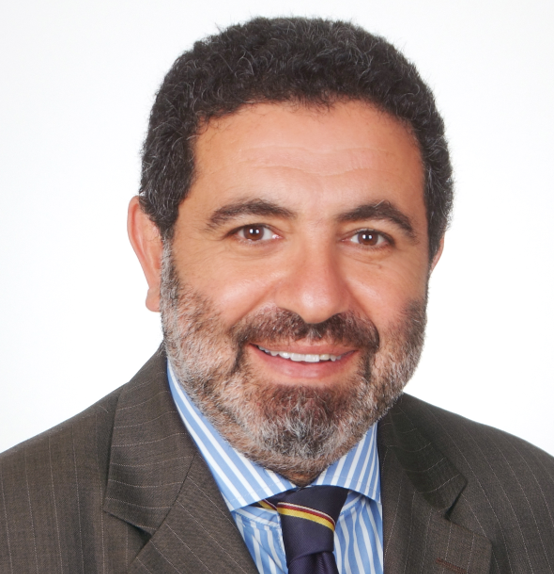In this exclusive interview, ESG Mena speaks with Gaby Hanna, Senior Vice President, Head of Region Middle East and Africa / Managing Director Everllence MEA, about the company’s decades-long leadership in carbon capture technology, its recent rebranding, and its growing role in supporting the region’s environmental transition. From large-scale projects in Abu Dhabi and Saudi Arabia to ambitions in the cement sector, Hanna outlines how Everland is positioning itself to help MENA meet its net-zero targets, the challenges of regulation and investment, and why carbon capture is more than just a stopgap measure.
– To begin, can you tell us the main focus of today’s session?
–We are here today to talk about two main subjects: carbon capture, and how Everland has the technology to support the transition to a better environment, and our rebranding to a new name. This part of the world is associated with many industries—oil and gas, petrochemicals, and cement—which are major culprits for emissions. With the global initiative to preserve Mother Earth, one of the main solutions is to capture carbon and use it in a better way rather than letting it into the atmosphere. Everland has been doing this for over 35 years, with many global references, making us a leader in such technology.
-What does the name “Everland” mean, and why change from MAN Energy Solutions?
–“Ever” comes from many firsts in our history: the first-ever diesel engine by Dr. Rudolf Diesel, an MAN engineer; the first-ever gas engine; the first diesel-powered ship (Selandia); the first subsea compressor; the largest heat pump in the world. “Land” comes from “excellence,” reflecting our quality. The name change was partly because MAN Energy Solutions did not own the “MAN” name—it belongs to MAN Truck & Bus. People associated us with trucks more than our work. But we also wanted a name for our green transition—something more appealing, environmentally friendly, and attractive to new talent. We are still part of the Volkswagen Group; only the brand changed.
-Can you give an overview of the company’s global presence?
–We have around 15,000 employees in 140 countries. Last year’s turnover was €4.3 billion, and this year we expect over €5.5 billion. We have over 260 years of experience, present in 150 countries with 140 sites. We manufacture in Europe, India, and China, with service centers worldwide. Our PrimeServ network is unmatched. We have decentralized into four regions—MENA is one of the most promising. Local decision-making, technical expertise, and proximity to customers have quadrupled our order intake here.
– What about training and local capacity building?
–We established our first training academy in Dubai for both customers and employees, training local engineers from across the region. A second academy is planned for Mumbai, India. This is part of decentralization—bringing expertise closer to the market.
-What are your key technologies for environmental transition?
–We have moved from conventional compressors and engines to more environmentally friendly solutions, including the production of green hydrogen using PEM technology, the development of future-fuel engines beyond traditional diesel or gas for ships—now including methanol and ammonia as more eco-friendly options, retrofitting older ships with cleaner engines to meet strict environmental standards, the deployment of carbon capture systems as a core focus, and investment in large-scale heat pumps, a growing sector that has yet to gain momentum in this region.
– How does your carbon capture technology work?
– In major industrial plants, our compressor packages can capture up to 85% of CO₂ emissions. The CO₂ can be stored, reinjected into processes, or used for ammonia, fertilizers, or even beverages. We have 30+ years of references worldwide, including Abu Dhabi’s Habshan (the largest CO₂ capture project in the Middle East), projects in Saudi Arabia (Hawiyah and Uthmaniyah), and Norway’s Northern Lights cement project. We also do CO₂ storage in offshore reservoirs, like in the Netherlands. One of our compressors—a 10-stage CO₂ unit—has run for over 20 years in a urea application.
– How important is MENA to your global strategy?
–Initially, the carbon capture strategy focused on the US and Europe. But many early projects came from MENA. The region lags environmentally but has many heavy industries without carbon capture—a huge opportunity. We now have 2,000+ employees here, with engineering and applications teams in Dubai, and full local technical capability.
-What about the cement sector?
–Governments need to regulate and incentivize. The private sector must invest, but carbon capture increases capex. Tax benefits and incentives can help. We can replicate Norway’s success here—we are in talks with cement plants, but progress is slower than in oil and gas.
-Key trends in carbon capture?
A: Companies like ADNOC are implementing it in new plants. UAE’s 2050 net-zero goal will require more such projects. We are tracking ADNOC projects due within a year.
– Lessons from projects like Habshan?
A: Installing carbon capture is the right step to reduce emissions. Scaling requires both mindset and technology.
-Balancing Abu Dhabi’s growth with emissions targets?
–Growth is faster than emissions cuts, but more carbon capture projects are coming. We work with ADNOC to increase oil production to 5 million bpd, using CO₂ for enhanced oil recovery.
-Is carbon capture economically valuable long-term?
–Absolutely—it creates jobs, profits, and innovation. CO₂ can improve processes, be used as feedstock, stored, or even form diamonds over time.
-What’s critical for success in 5–10 years?
– Economies of scale and technology improvement. Plants will be larger, requiring more complex compressor trains.
– How safe is CO₂ storage?
– Very safe—safer than storing natural gas. Better to store than release it.
– What is your view on carbon taxes being discussed in the GCC?
– While I’m not directly involved in tax policy, introducing a carbon tax would be another step in the right direction, pushing the private sector to take emissions seriously.
– Beyond oil, gas, and cement, which sectors can benefit from your expertise?
–Steel, fertilizers, buildings, transport, in addition to oil, gas, and cement.




